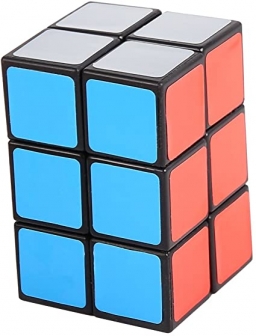The block
The block, the edges formed by three consecutive GP members, has a surface area of 112 cm2. The sum of the edges that pass through one vertex is 14 cm. Calculate the volume of this block.
Final Answer:

Tips for related online calculators
Are you looking for help with calculating roots of a quadratic equation?
Do you have a system of equations and are looking for calculator system of linear equations?
Tip: Our volume units converter will help you convert volume units.
Do you have a system of equations and are looking for calculator system of linear equations?
Tip: Our volume units converter will help you convert volume units.
You need to know the following knowledge to solve this word math problem:
algebrasolid geometryUnits of physical quantities
Related math problems and questions:
- GP - edge lengths
 The block edge lengths are made up of three consecutive GP members. The sum of the lengths of all edges is 84 cm, and the volume block is 64 cm³. Determine the surface of the block.
The block edge lengths are made up of three consecutive GP members. The sum of the lengths of all edges is 84 cm, and the volume block is 64 cm³. Determine the surface of the block. - Consecutive members
 The block has a volume of 1728 cm³. Determine the lengths of the edges a, b, and c of the blocks for which a < b < c and a + b + c = 38 cm and whose numerical values in cm represent three consecutive members of the geometric sequence.
The block has a volume of 1728 cm³. Determine the lengths of the edges a, b, and c of the blocks for which a < b < c and a + b + c = 38 cm and whose numerical values in cm represent three consecutive members of the geometric sequence. - A sphere
 A sphere has a radius of 5.5 cm. Determine its volume and surface area. A frustum of the sphere is formed by two parallel planes. One through the diameter of the curved surface of the frustum is to be of the surface area of the sphere. Find the height and
A sphere has a radius of 5.5 cm. Determine its volume and surface area. A frustum of the sphere is formed by two parallel planes. One through the diameter of the curved surface of the frustum is to be of the surface area of the sphere. Find the height and - Consecutive 46781
 We get three consecutive GP members if we subtract the same number from 33, 45, and 63. Determine this GP and calculate its fifth member.
We get three consecutive GP members if we subtract the same number from 33, 45, and 63. Determine this GP and calculate its fifth member. - Calculate 7653
 The block volume is 900 cm3, and the surface is 600 cm². The area of one wall is 60 cm². Calculate the length of edges a, b, and c.
The block volume is 900 cm3, and the surface is 600 cm². The area of one wall is 60 cm². Calculate the length of edges a, b, and c. - Cuboid
 The sum of the lengths of the three edges of the cuboid that originate from one vertex is 210 cm. The edge length ratio is 7:5:3. Calculate the length of the edges.
The sum of the lengths of the three edges of the cuboid that originate from one vertex is 210 cm. The edge length ratio is 7:5:3. Calculate the length of the edges. - Cube edges
 Find the cube edge length (in centimeters) that has a surface and volume expressed by the same numeric value. Draw this cube in a ratio of 1:2.
Find the cube edge length (in centimeters) that has a surface and volume expressed by the same numeric value. Draw this cube in a ratio of 1:2.
